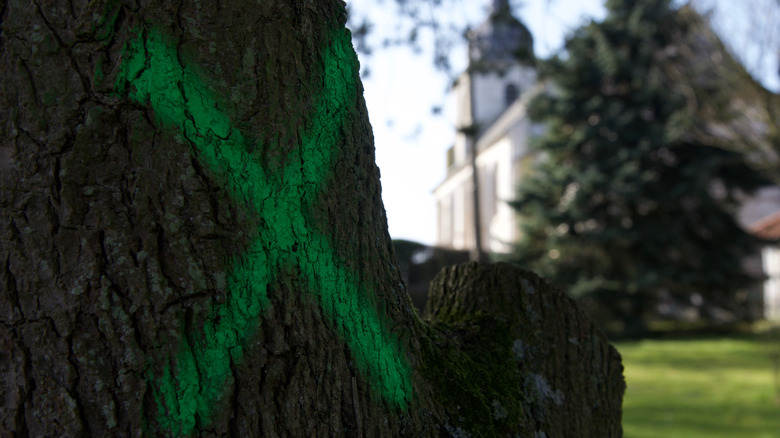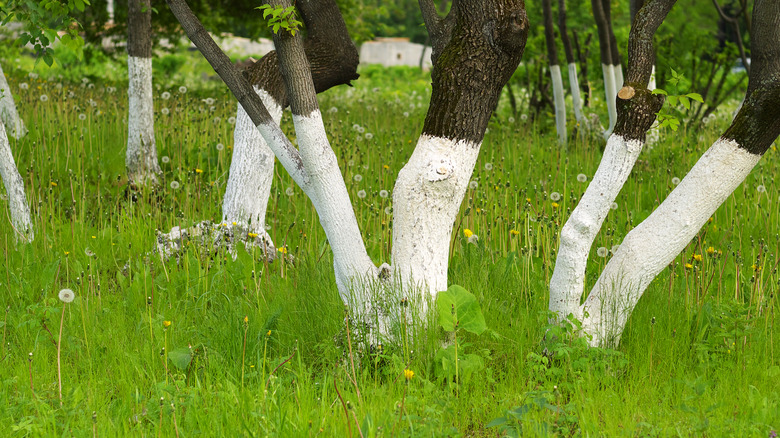This Is What It Means When You See Paint On Trees
Have you ever walked through the forest — or down a tree-lined sidewalk — and seen trees marked by spray paint? It might seem like a meaningless tagging, but they're actually symbols for environmental agencies and contractors in the know. The meaning of each symbol, from the colors (blue, white, purple) to the shape (slashes, dots, Xs), varies by location, and are best deciphered by going onto your city's forestry department website, according to Reader's Digest. There are, however, a few ways to determine the meaning based on the context.
If you're in a privately-owned forest, for example, the paint may be used as a signal to log-cutters, marking which trees to cut and which to avoid. "In some places, trees with nests of rare or endangered species are marked," forestry specialist Christopher Evans told Reader's Digest. "That is the case with the federally endangered red-cockaded woodpecker in the southern United States. Their tree nests are generally marked with a white paint ring." Other markings in the forest — usually in blue or purple paint — may signal property boundaries for things like hunting (see the Bangor Daily News) or logging (see Michigan State University).
Warning signs and trail signs
Painting trees isn't always about cutting them down. Often, it's about saving them. In Boulder, Colorado, foresters mark trees with dots at the base to signify that it needs treatment for diseases like emerald ash borer, elm scale, or drippy blight, according to Reader's Digest. A dot at eye level, on the other hand, means the tree needs to be pruned. This also helps notify neighbors which trees are set to be pruned or worked on. When the entire bottom trunk of a thin-barked tree is painted white, it's often to keep the tree cool and prevent sun scald — the white paint has a high albedo, which reflects sun away from the tree.
There is one other major reason, apart from vandalism, that you might see paint on the bark of a tree. If you're on public land, you may see paint used to blaze hiking trails. The idea is to follow the blazes of the same color to stay on the trail (via North Country Trail). One blaze on a tree means you're on the right path, for example, while two means that you're coming to a turn.

